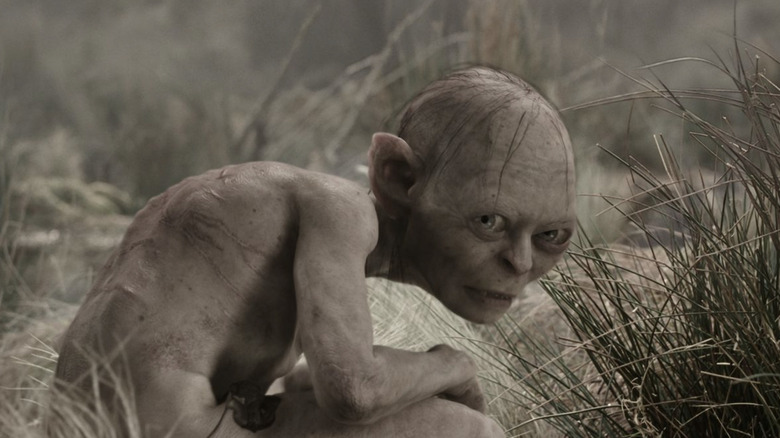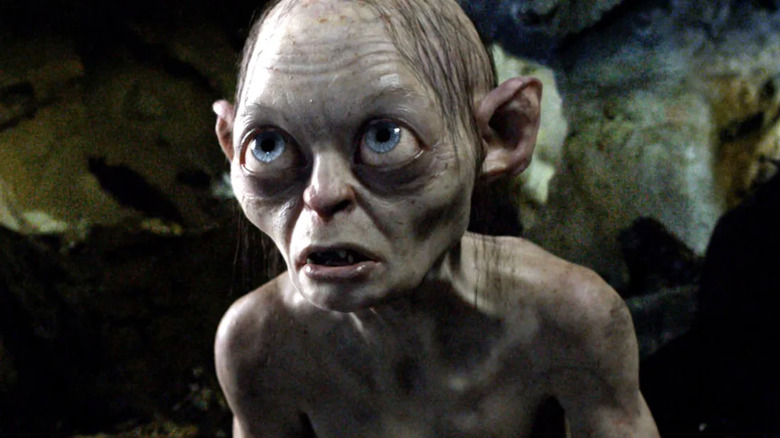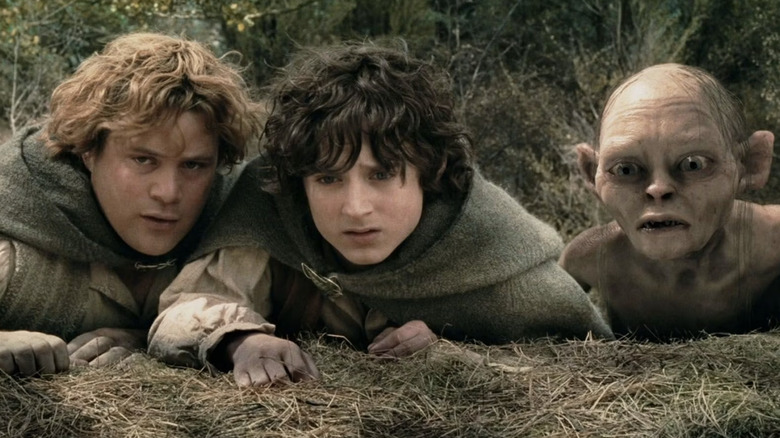Andy Serkis Never Felt Like His Job As Gollum Was Finished
Before Andy Serkis portrayed Caesar in the second reboot of the "Planet of the Apes" franchise and before he took over directing duties in the second installment of the "Venom" franchise in "Let There Be Carnage," Serkis found himself putting on a mo-cap suit to play Gollum in "The Lord of the Rings" trilogy. Often considered Peter Jackson's magnum opus, "The Lord of the Rings" trilogy was a massive undertaking that set the standard for what a blockbuster trilogy can be. Serkis' Gollum was no small part, playing one of the most integral characters in the course of the three films. What set Serkis apart from the rest of the cast would be something that would define his career in Hollywood for years to come.
Andy Serkis had his work cut out for him when portraying the unsavory character of Gollum. A significant reason for that was because of the motion capture process. Capturing a motion capture performance on camera is one thing, but turning that performance into a fully realized character is an entirely different process. Andy Serkis' experience on "The Lord of the Rings" would lead the actor to a whole new understanding of being done with a performance, all while shaping his future roles in the years to come.
The long process of motion capture
Andy Serkis talked about the process of portraying Gollum in an interview with The Seattle Pacific University Magazine, describing it as "a very demanding role." Not only was it "very physically exhausting and vocally very tiring," it was "psychologically ... taxing," Serkis said. "And on a technical level, the other actors, whenever they finished the scene at the end of the day, they knew that their definitive performance was in the can. It was on 35 millimeter, and that was it."
When it came to Serkis' performance, it didn't end when the cameras stopped rolling, as he would explain:
"But for me, it was like, I played the part and played the scene. When you shoot a scene, it's like you've put a peg in the chart of the character, and you can build from that. For me, it would be like two years before the definitive scene would be completed, because there are so many processes involved between."
Andy Serkis wouldn't have traditional actors' comfort when shooting a scene. Whereas whatever was captured on camera became the end all be all for a conventional actor, Serkis was introduced to what must be an anxiety-riddled two years of uncertainty about whether his work on any given "Lord of the Rings" film would be done.
"There would be motion capture and then revisiting it and then working with the animators and doing more vocal tracks. There was never a moment when I went, Bang! I've got the scene."
Motion capture is acting too
The art of motion capture performance was one that until recently, had been underappreciated despite the level of skill it takes. Conversations regarding motion capture roles being considered in award categories had Andy Serkis at the center of most of those conversations — precisely because of Serkis' performance as Caesar in the "Planet of the Apes" films, which garnered praise from audiences for the raw emotion put on display. Movies like "Lord of the Rings" and "Planet of the Apes" would ultimately cause a shift in the conversation about the merit of motion capture performers, putting them on par with traditional actors.
Serkis' perseverance through an entire trilogy of films would pay off for his career in the future. Motion capture would soon become a staple of the actor's work, reuniting with Peter Jackson to do motion capture work for "King Kong" and later teaming with Matt Reeves to give one of his best performances as an actor in the "Planet of the Apes" trilogy. Serkis' dedication to what at the time was a fledgling new type of performance would pave the way for himself and other actors to develop the patience to hone their craft and performances.


